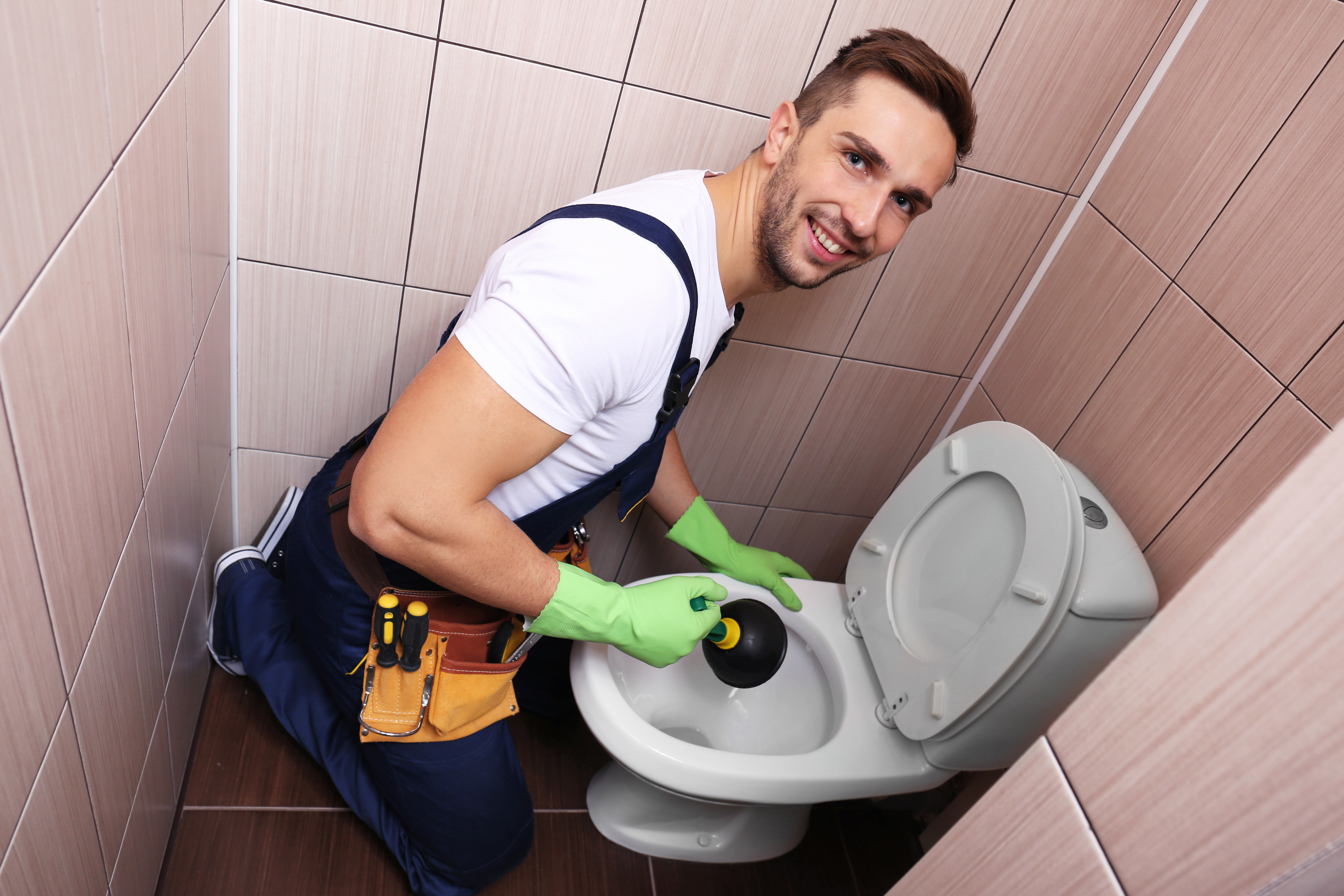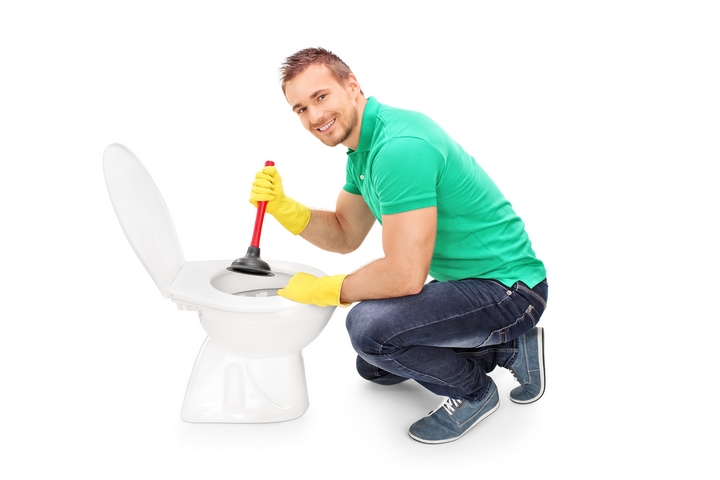Utilizing Plunger and Drain Cleaners: Effective Techniques
Utilizing Plunger and Drain Cleaners: Effective Techniques
Blog Article
The publisher is making several good observations on the subject of How To Use Your Toilet Plunger Correctly in 5 Easy Steps in general in the content directly below.

Intro
Correct upkeep of house drains pipes is essential for preventing obstructions and making certain smooth water circulation. One of the secret devices in every property owner's toolkit is the bettor, together with various drainpipe cleaners developed to deal with persistent obstructions properly. This article explores how to use plungers and drain cleaners efficiently to maintain your drains pipes streaming openly.
Section 1: Comprehending Bettors
Sorts of Plungers
There are several kinds of bettors available, each created for various sorts of drains and clogs. The most usual types consist of cup bettors, flange plungers, and accordion bettors.
Exactly How Plungers Work
Bettors deal with the concept of producing pressure and suction to displace blockages. When effectively applied over a drainpipe, they produce a vacuum that can take out particles or break up clogs.
Picking the Right Plunger
Choosing the appropriate plunger depends on the type of drain and the nature of the blockage. Cup bettors are optimal for sinks and bathtubs, while flange bettors are much better fit for toilets because of their layout.
Usual Mistakes with Bettors
Staying clear of these blunders ensures effective plunging: incorrect seal around the drainpipe, inadequate pressure, and unclear bordering debris.
Area 2: Utilizing Plungers Successfully
Prep work
Before diving, make sure the plunger covers the drain totally and forms a tight seal. Clear any kind of noticeable debris around the drainpipe opening.
Strategy
Begin with gentle diving activities to construct suction. Rise pressure progressively, using a stable rhythm. Repeat as necessary until the drainpipe gets rid of.
Fixing Tips
If diving does not function, attempt readjusting the seal, using oil jelly for a much better seal, or utilizing a different sort of plunger.
Section 3: Understanding Drainpipe Cleaning Company
Types of Drain Cleaning Company
Drain pipes cleansers can be chemical or chemical. Chemical cleansers make use of solid chemicals to dissolve obstructions, while enzymatic cleansers use all-natural enzymes to break down organic matter.
Just How Drainpipe Cleaners Work
Chemical cleaners respond with obstructions to dissolve them, while enzymatic cleaners break down organic materials like hair and grease without harming pipes.
Safety Factors to consider
Always wear handwear covers and eye defense when using chemical drain cleaners. Make sure ample air flow and comply with producer instructions meticulously.
Eco-Friendly Alternatives
Think about using vinegar and baking soda or enzyme-based cleansers for eco-friendly options that are more secure for pipes and the environment.
Area 4: Making Use Of Drainpipe Cleansers Efficiently
Application Strategies
Pour chemical cleaners directly right into the drainpipe opening. Permit them to benefit the suggested time prior to purging with warm water. Enzymatic cleaners should rest over night.
Safety measures
Prevent blending different types of cleaners, as this can generate hazardous fumes. Never ever make use of chemical cleansers together with a plunger, as spilling can take place.
Dealing With Persistent Blockages
For persistent clogs, take into consideration making use of a pipes snake or calling a professional plumber to stop damages to pipelines.
Conclusion
In conclusion, comprehending how to make use of plungers and drainpipe cleansers successfully is essential for maintaining healthy and balanced pipes systems. By picking the right tools and techniques, house owners can deal with small clogs and stop major plumbing concerns down the line.
How To Properly Use A Plumbing Snake To Clear Drains
When any drain clogs in our home arise, we tend to gravitate toward the plunger and little else. In cases where the plunger and its vacuum-created pressure are not able to clear clogs, many immediately move to harmful chemicals or simply call their plumber to fix the issue.
we’re happy to help with all drain cleaning needs and concerns. This includes informing you on a few other home remedies you may have at your disposal for minor to moderate clogs, one of which is the use of a plumbing snake. Many people have never used one of these before – let’s go over the steps to take when your drain clogs and you have a plumbing snake available.
Attempt Plunger Use
The first step here, as we noted above, should indeed be to grab your plunger when you notice a drain clog and attempt to resolve it this way. If you’re unsure how to use a particular type of plunger, our plumbers can answer any questions you have. If this doesn’t do the trick, however, you move on to the snake.
Locate And Prepare Snake
A plumbing snake is a metal or plastic device that’s generally about a quarter of an inch thick. It’s design with significant extensions, meant to reach down into your clogged drain and push the clog out. Snakes also contain drain augers that will latch onto and push stubborn blockages.
If your plunger doesn’t clear a clog, locate your snake and bring it to the drain in question. We also recommend keeping a bucket nearby to collect the clog once you pull it out, plus we’d advise wearing goggles and possibly protective gloves.
Feed Snake
Once you’re ready to go, feed the snake slowly down the drain, using the crank device it comes with to keep it moving until it finds the clog. Once this happens, much of the clog will be latched onto the coil so you can pull it out, while the rest will simply break up and flow downward.
Detach Debris
Remove the snake slowly from the drain, and once you’ve done so, pick off any debris that’s stuck to the coil. This is another area where wearing gloves is a must.
Flush Drain
Finally, take a few minutes to ensure the snake has done its job correctly. If you’ve been using it on a toilet, flush the toilet a couple times and make sure everything flows well. If you’ve used it on a different drain, flush it with some room temperature water.
https://www.mybuddytheplumber.com/blog/how-to-properly-use-a-plumbing-snake-to-clear-drains/

Application Strategies
Pour chemical cleaners directly right into the drainpipe opening. Permit them to benefit the suggested time prior to purging with warm water. Enzymatic cleaners should rest over night.
Safety measures
Prevent blending different types of cleaners, as this can generate hazardous fumes. Never ever make use of chemical cleansers together with a plunger, as spilling can take place.
Dealing With Persistent Blockages
For persistent clogs, take into consideration making use of a pipes snake or calling a professional plumber to stop damages to pipelines.
Conclusion
In conclusion, comprehending how to make use of plungers and drainpipe cleansers successfully is essential for maintaining healthy and balanced pipes systems. By picking the right tools and techniques, house owners can deal with small clogs and stop major plumbing concerns down the line.
How To Properly Use A Plumbing Snake To Clear Drains
When any drain clogs in our home arise, we tend to gravitate toward the plunger and little else. In cases where the plunger and its vacuum-created pressure are not able to clear clogs, many immediately move to harmful chemicals or simply call their plumber to fix the issue.
we’re happy to help with all drain cleaning needs and concerns. This includes informing you on a few other home remedies you may have at your disposal for minor to moderate clogs, one of which is the use of a plumbing snake. Many people have never used one of these before – let’s go over the steps to take when your drain clogs and you have a plumbing snake available.
Attempt Plunger Use
The first step here, as we noted above, should indeed be to grab your plunger when you notice a drain clog and attempt to resolve it this way. If you’re unsure how to use a particular type of plunger, our plumbers can answer any questions you have. If this doesn’t do the trick, however, you move on to the snake.
Locate And Prepare Snake
A plumbing snake is a metal or plastic device that’s generally about a quarter of an inch thick. It’s design with significant extensions, meant to reach down into your clogged drain and push the clog out. Snakes also contain drain augers that will latch onto and push stubborn blockages.
If your plunger doesn’t clear a clog, locate your snake and bring it to the drain in question. We also recommend keeping a bucket nearby to collect the clog once you pull it out, plus we’d advise wearing goggles and possibly protective gloves.
Feed Snake
Once you’re ready to go, feed the snake slowly down the drain, using the crank device it comes with to keep it moving until it finds the clog. Once this happens, much of the clog will be latched onto the coil so you can pull it out, while the rest will simply break up and flow downward.
Detach Debris
Remove the snake slowly from the drain, and once you’ve done so, pick off any debris that’s stuck to the coil. This is another area where wearing gloves is a must.
Flush Drain
Finally, take a few minutes to ensure the snake has done its job correctly. If you’ve been using it on a toilet, flush the toilet a couple times and make sure everything flows well. If you’ve used it on a different drain, flush it with some room temperature water.
https://www.mybuddytheplumber.com/blog/how-to-properly-use-a-plumbing-snake-to-clear-drains/

We are very interested by How To Use Your Toilet Plunger Correctly in 5 Easy Steps and I'm hoping you liked the new blog posting. Remember to take the opportunity to share this entry if you appreciated it. I am grateful for your time. Revisit us soon.
Visit My Site Report this page